Large Copper Butterfly - Lycaena dispar
Phylum: Arthropoda - Class: Insecta - Order: Lepidoptera - Family: Lycaenidae
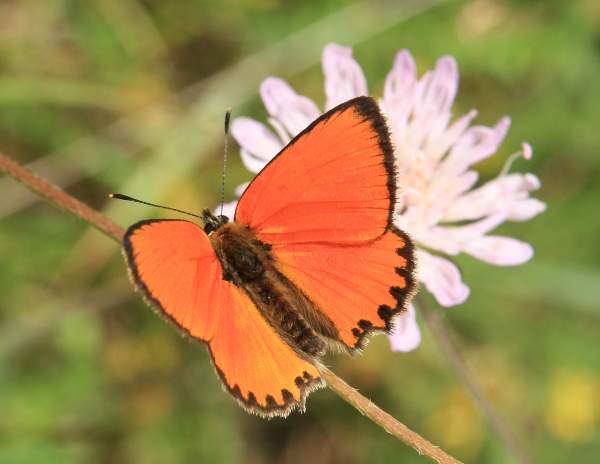
Above: a male Large Copper, Bulgaria
Sadly extinct in Britain since 1865 (or at least that was when it was last officially recorded), the Large Copper butterfly is in decline in many other countries in Europe. The lovely specimen pictured above was just one of many that were enjoying a magnificent feast in a wildflower meadow in the Pirin Mountains of Bulgaria during June 2009.
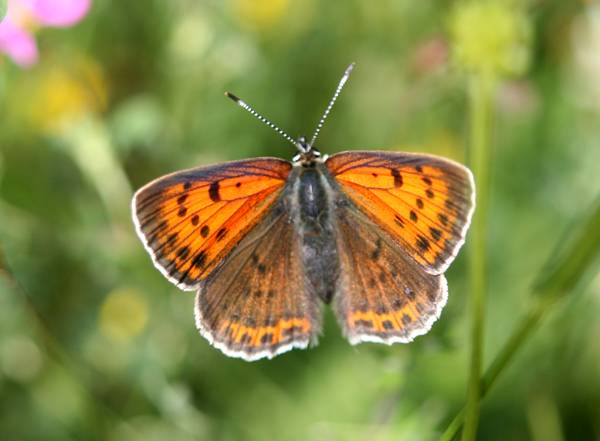
Above: a female Large Copper
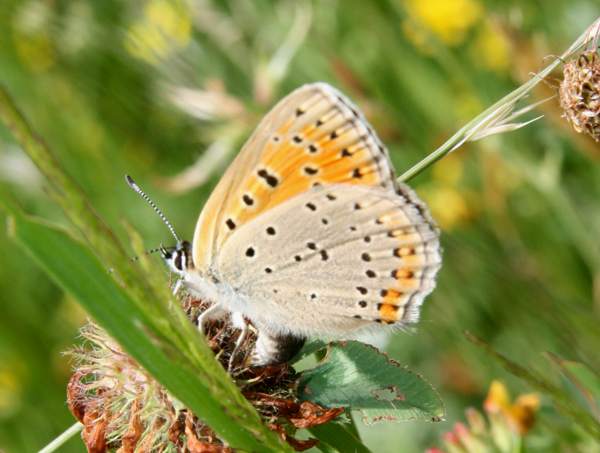
Above: underwing view
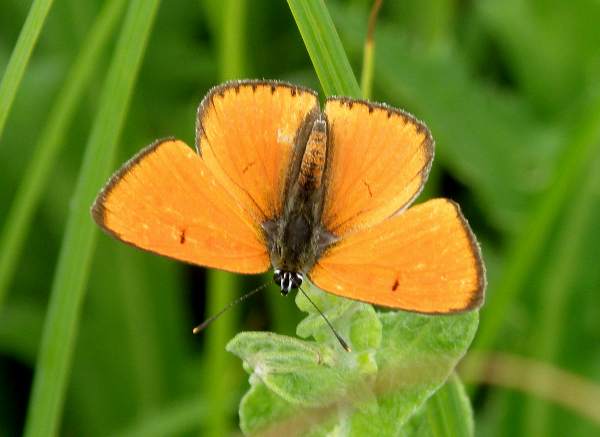
Above: a male Large Copper - the wing spots are evident in this specimen.
Despite several reintroduction attempts at sites it has so far proved impossible to reinstate self-sustaining colonies of this beautiful butterfly in Britain and Ireland; that may be because the sub-species chosen (ssp batavus, brought in from Holland) was unable to adapt to habitats subtly different from their native country.
The wingspan is 4.5 to 5.5cm. The male has a mainly coppery upperwing colour while the female is like a two-times magnified Small Copper, being much darker than the male and with broader dark edges to the wings and many blackish spots.
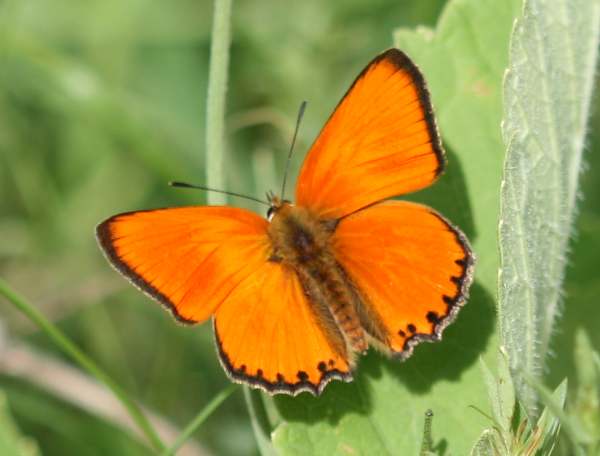
Distribution
Long since lost from the fenlands of Cambridgeshire, its last foothold in Britain, the Large Copper can still be found in many parts of central Europe and Asia.
Even where it does occur populations of the Large Copper butterfly are generally sparse and many are declining. However, plans for another attempt to reintroduce a Large Copper butterfly to Britain from mainland Europe are still in consideration.
Lifecycle
The larval foodplant of the Large Copper is always a dock (Rumex species) associated with fens and other wet habitats. In Holland the Large Copper uses Rumex hydrolapathum, the Large Water Dock; in eastern Europe other water dock species are the larval foodplants of the subspecies rutilus that occurs there.
Eggs are laid singly on the larval foodplant, although a female will lay an egg beside an egg laid by another Large Copper, so that small clusters are sometimes seen. The eggs hatch into tiny green caterpillars that feed until late September; then they hibernate through the cold winter months, wakening and continuing to feed in April, pupating in June. The pupa is rounded and buff coloured with grey markings along the sides of the abdomen. The pupal stage lasts into July, when the adult butterflies emerge.
Studying butterflies and moths...
Excited at the prospect of flyfishing? So are we, and we're pretty sure you would find the Winding River Mystery trilogy of action-packed thrillers gripping reading too. Dead Drift, Dead Cert, and Dead End are Pat O'Reilly's latest river-and-flyfishing based novels, and now they are available in ebook format. Full details on our website here...
Buy each book for just £4.96 on Amazon...
Please Help Us: If you have found this information interesting and useful, please consider helping to keep First Nature online by making a small donation towards the web hosting and internet costs.
Any donations over and above the essential running costs will help support the conservation work of Plantlife, the Rivers Trust and charitable botanic gardens - as do author royalties and publisher proceeds from books by Pat and Sue.
